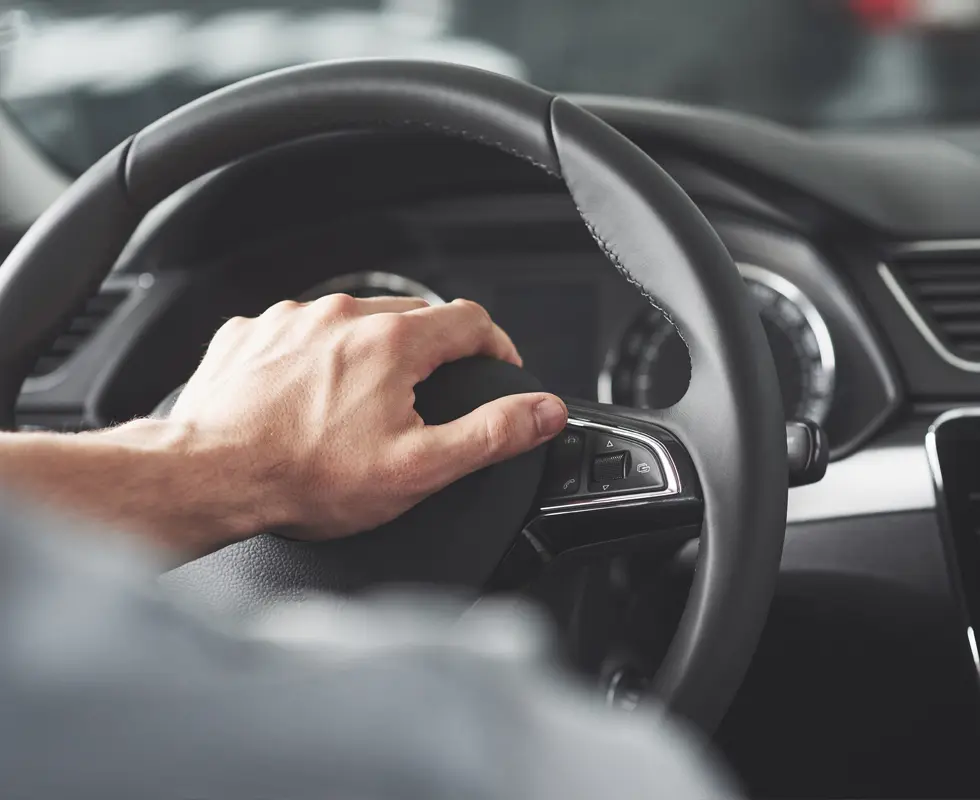Audi R8 Lease
The Audi R8 was first released in 2006 as a sports car, standing as a testament to automotive perfection. The Audi R8 was developed as a road-going sports car that combined racing technology with everyday usability. From its breathtaking design to its heart-pounding performance, every aspect of the R8 exudes passion and excitement. Available in either coupe or convertible form, this Audi model ignites the senses of anyone fortunate enough to experience its exhilarating drive.
Over the years, the R8 evolved through various generations and special editions. If you’re a car enthusiast, then Audi R8 leasing is worth looking at. Browse our current Audi R8 lease deals below or contact GB Vehicle Leasing on 0161 667 5338 for a bespoke quote.
Free Nationwide Delivery
We deliver to most places in mainland UK
Road Tax Included
Our lease deals come with road tax included
Consultative Approach
No pressure selling just honest advice
Audi R8 Lease Deals
View our latest Audi R8 lease deals below.

Why Choose An Audi R8?
The Audi R8 is an exceptional choice for drivers seeking a supercar that perfectly blends breathtaking performance, everyday usability, and stunning design. As Audi’s flagship model, the R8 represents the pinnacle of the brand’s engineering, incorporating motorsport technology and luxury refinement into one exhilarating package. This Audi remains a popular prestigious sports car as it rivals the likes of the McLaren 570S and Porsche 911.
What sets the Audi R8 apart is its ability to combine supercar performance with everyday comfort and practicality. Thanks to Audi’s renowned quattro all-wheel-drive system, the R8 delivers exceptional grip and handling, offering confidence in various driving conditions, including wet roads. Its balanced chassis, precise steering, and advanced suspension create a driving experience that feels refined on city streets yet thrilling on open roads or the track.
At the centre of the Audi R8 lies a potent engine lineup that unleashes raw power and adrenaline-fueled thrills. With rapid acceleration and precise handling, the Audi R8 easily conquers both the racetrack and the open road. Specifically, the V10 mid-engine, boasting power up to 620ps, unleashes breathtaking moments of pure automotive exhilaration.
Inside, the Audi R8 offers a premium cabin with high-quality materials, supportive sports seats, and driver-focused controls. In terms of infotainment, the Audi R8 offers an immersive experience with its advanced features. At the forefront is the 12.3” high-resolution Audi Virtual Cockpit, complemented by the MMI Navigation plus with MMI touch. Moreover, the MMI system can also be controlled effortlessly through voice commands, providing another convenient option for hands-free operation.
Audi R8 Leasing
Leasing an Audi R8 through GB Vehicle Leasing is an excellent way to enjoy this high-performance supercar without the financial commitment of buying outright. We work with the UK’s leading finance partners to secure competitive Audi R8 lease deals. Whether you choose the Coupe or Spyder version, you’ll enjoy the R8’s sharp design, luxurious interior, and cutting-edge technology.
With GB Vehicle Leasing, your Audi R8 lease includes a full UK manufacturer’s warranty and free UK mainland delivery. You also have the option to add a maintenance package at a fixed monthly cost. Our dedicated team provides expert guidance and exceptional customer service throughout the Audi R8 leasing process, ensuring a smooth and stress-free experience from start to finish. Leasing the Audi R8 allows you to enjoy the thrill of driving one of the world’s most respected supercars while avoiding concerns about depreciation and future resale value.
For our latest Audi R8 lease deals, contact GB Vehicle Leasing today on 0161 667 5338 or email us for a free, no-obligation quote. Discover why so many customers trust us for expert leasing advice and premium service. Also, view our entire range of Audi car lease deals and let’s see how we can assist you.
Click here to learn more about GB Vehicle Leasing.

Part Exchange Your Old Car
Need to sell your old car? Part-exchanging eliminates the hassle of selling your old vehicle privately and dealing with potential buyers. Currently, we're one of the very few brokers that will accept a part exchange!
Audi R8 Leasing FAQs
Does an Audi R8 lease come with maintenance included?
Vehicle maintenance can be added as an optional extra. If you would like to know how much a maintenance package will cost on a particular car, our leasing consultants are more than happy to look into this for you.
Can I put my private plate on when I lease an Audi R8?
Yes, you can add a private number plate to a leased vehicle; however, certain steps must be completed beforehand since the vehicle isn't owned by you. Please contact our Admin Team 0161 762 5680 or send us a message and we can assist you with this.
What is the seating capacity of the Audi R8?
The Audi R8 is strictly a two-seater car. Despite its compact interior, the head room is still reasonable.
Is a credit check required to lease an Audi R8?
Yes, a credit check is required as part of the leasing process. After you submit your finance application, lenders usually perform a credit check which helps to determine your reliability as a borrower. Typically, a credit score above 700 is regarded as a favourable starting point for car leasing. If you have a low credit score, it’s a good idea to improve you credit score before applying for a car lease.
How much does it cost to lease an Audi R8?
The cost of leasing an Audi R8 fluctuates depending on factors like the particular trim level, lease term, and mileage allowance you choose. However, Audi leasing offers an economical and convenient way to enjoy a brand-new car. To explore our latest Audi R8 lease deals, don't hesitate to get in touch with our car leasing specialists. We’re here to help.
Latest Leasing News and Reviews
Keep up to date with the latest leasing news from GB Vehicle Leasing.










































